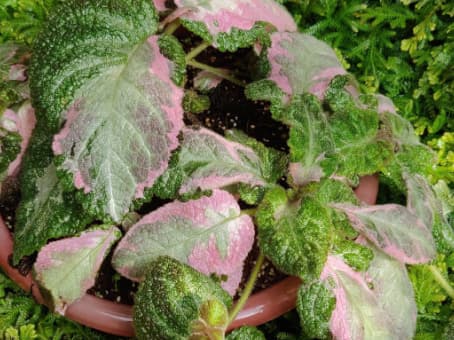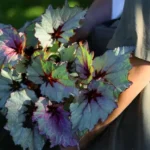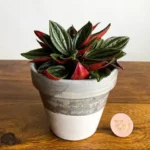Episcia ‘Picasso’ Care and Cultivar Guide: Foliage Color, Growth Tips, and Troubleshooting
Episcia ‘Picasso’ is one of the most sought-after foliage cultivars in the Gesneriaceae family, known for its stunning pink-marbled leaves, fast growth habit, and adaptability as an indoor ornamental plant. Though often grouped under the common name “flame violet,” this particular cultivar is prized not for its flowers, but for its artistic, variegated foliage.
1. Overview of Episcia ‘Picasso’
| Trait | Description |
|---|---|
| Botanical Name | Episcia cv. ‘Picasso’ |
| Family | Gesneriaceae |
| Common Name | Flame Violet (variegated), Thai Episcia, Pink Episcia |
| Growth Habit | Low-growing, stoloniferous trailing perennial |
| Native Region | Hybrid origin; genus native to Central/South American forests |
| Primary Appeal | Variegated foliage with pink, silver, and green patterns |
2. Foliage Characteristics
‘Picasso’ is distinguished by:
- Pink or lavender veins and margins on a base of gray-green or olive foliage
- A soft, velvety texture with irregular silver spotting
- A highly variable variegation pattern, influenced by light and temperature
The variegation is unstable and dynamic, meaning that leaf coloration can shift over time. This is part of what makes this cultivar so interesting—but also occasionally puzzling to growers.
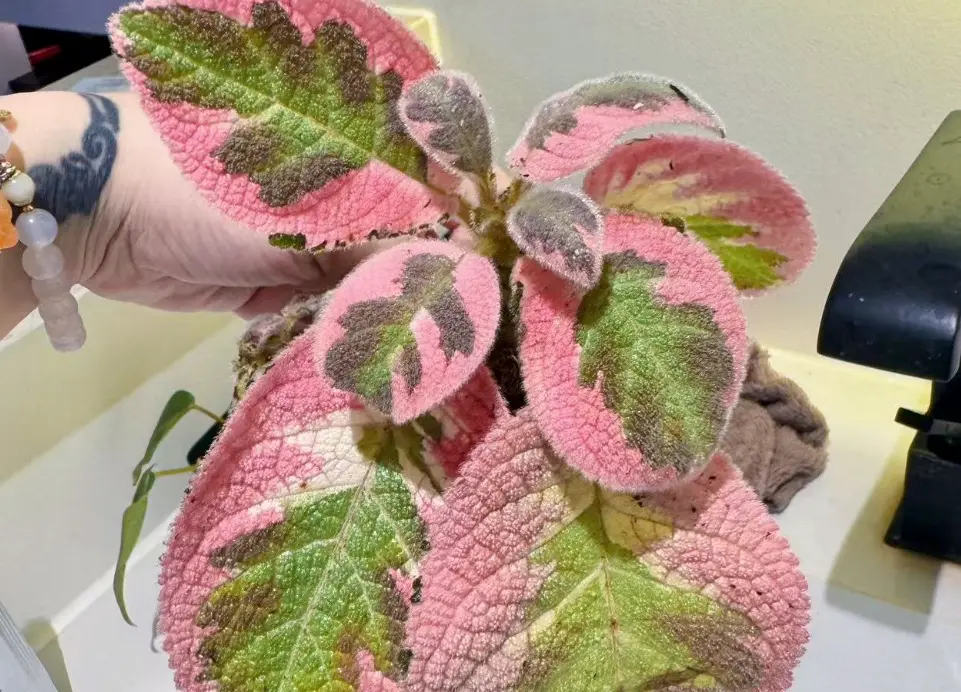
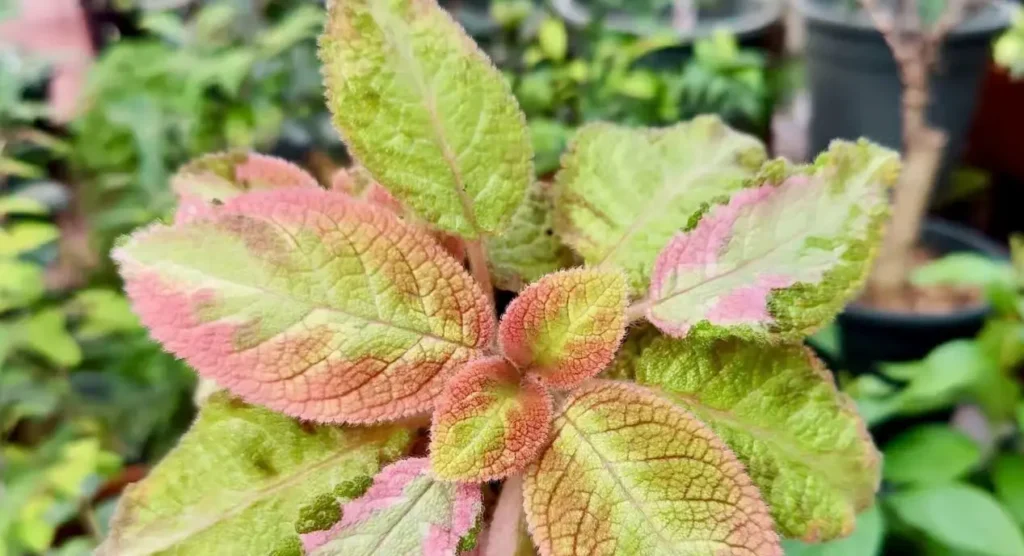
3. Why Are My ‘Picasso’ Leaves Turning Green?
This is one of the most common concerns among Episcia collectors. There are several potential causes:
| Cause | Explanation |
|---|---|
| Low Light | Lack of adequate light reduces pink pigmentation; leaves revert to green |
| Low Temperature | Temperatures below 12°C can suppress variegation |
| Winter Dormancy Effects | In winter, new leaves may emerge greener until warmth/light return |
| Lack of Variegated Base | If stolons form from green-leafed nodes, new growth may lack pink entirely |
| High Nitrogen Fertilizer | Excess nitrogen may encourage fast, green foliage growth |
Tip: If green reversion occurs, maintain warmer temperatures (ideally 25°C+), boost light to 4000–6000 lux, and avoid overfeeding. Variegation usually resumes once optimal conditions return.
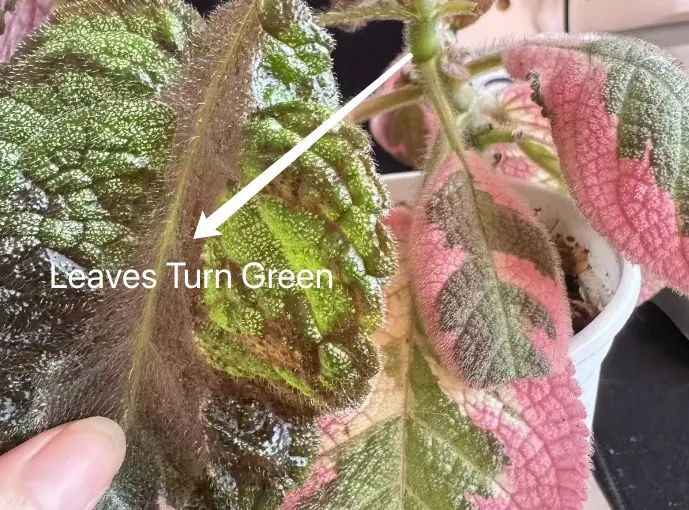
4. Optimal Growing Conditions
| Condition | Requirement |
|---|---|
| Light | Bright, filtered light (4000–6000 lux); up to 12000 lux tolerated |
| Temperature | Ideal: 20–30°C; avoid prolonged exposure below 12°C or above 36°C |
| Humidity | 70–85% preferred; use pebble trays, humidifiers, or terrariums |
| Watering | Keep consistently moist, but avoid soggy soil; water from below if possible |
| Soil | Light, airy mix (peat + perlite or coco coir); pH 5.5–6.5 |
| Fertilizer | Monthly feeding with diluted balanced or foliage-focused fertilizer |
5. Seasonal Behavior and Temperature Sensitivity
- Cold Sensitivity: Below 10°C, plants can stop producing variegated leaves and may suffer damage
- High Heat: Episcia can tolerate up to 36°C with high humidity but may require shading and airflow
- Winter Reversion: In cold seasons, new leaves may temporarily lose pink tones until temperatures rise
6. Propagation Tips
‘Picasso’ propagates easily by runners (stolons):
- Let the plant form baby nodes/runners.
- Allow the runner to root in moist soil next to the mother plant.
- Once rooted, cut and transplant.
Note: Ensure the stolon originates from a variegated node to maintain pink traits in offspring.
7. Common Issues and Fixes
| Problem | Likely Cause | Remedy |
|---|---|---|
| Leaves turning solid green | Low light, cold temps | Move to brighter area; increase warmth |
| Leaf edge browning | Dry air or direct sun | Increase humidity, filter light |
| No new growth | Cold soil or poor nutrients | Warm soil, repot in fresh medium |
| Soft stems/root rot | Overwatering, poor drainage | Repot, trim affected parts, improve mix |
8. Display and Design
‘Picasso’ excels in:
- Hanging baskets or shelf planters where foliage can trail
- Terrariums or glass cabinets with high humidity
- Mixing with green-leaf Episcia cultivars for contrast
- Pairing with moss, driftwood, or ceramic pots for a natural look
9. Conclusion
Episcia ‘Picasso’ is a visually captivating foliage plant with dynamic, ever-changing patterns. While it does require warm and humid conditions to maintain peak variegation, it rewards attentive growers with lush, trailing leaves that bring color and texture year-round. Its adaptability, fast growth, and propagation ease make it a must-have for foliage-focused collectors.
References
- The Gesneriad Society – https://www.gesneriadsociety.org
- Thai foliage enthusiast forums and collector databases (2021–2024)
- RHS Plant Database – https://www.rhs.org.uk
- User cultivation logs from Garden.org and PlantSwap
- Lee, M. (2019). Foliage Houseplants of Southeast Asia. Asian Horticulture Quarterly

